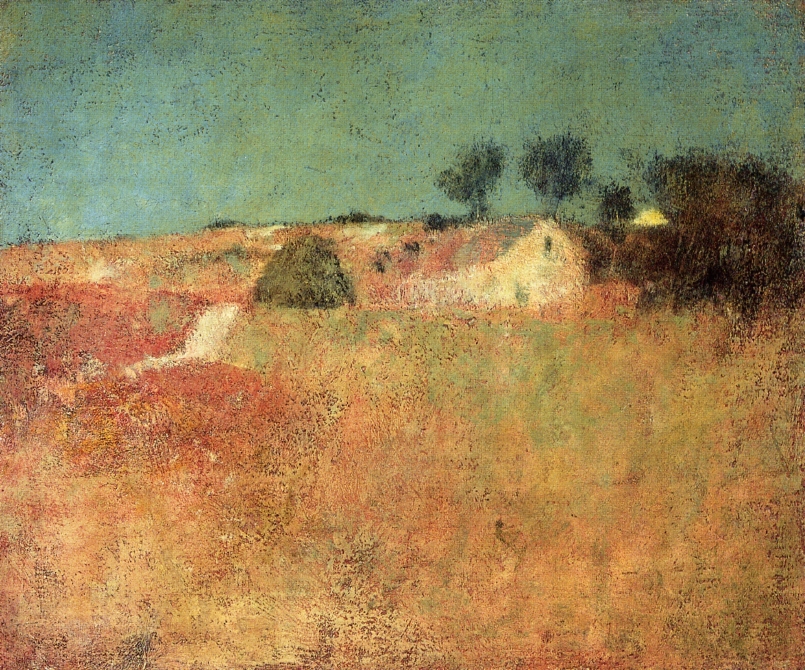Hawthorne on painting
As a follow-up to my previous post on my visit to the shows about perceptual painting in Maryland, I read a small book put together by the students of the man who inspired those two exhibits. When Hawthorne talks about how reasoning should not be part of painting, he means something specific: when you paint a person or a house, don’t paint as if you were a surgeon or an architect, simply see the spot of color it forms in your field of vision and paint that, not work form any prior knowledge about the “thing itself.” In other words, be a phenomenologist. But he also suggests that larger reasoning, theories or ideologies or conscious points of view about life are also alien to the sort of painting he advocated. Intentional narrative, message-imparting, intellectual content only turn painting into a package for some precious thought inside it. It becomes rarefied illustration of the thought comes first, the knowledge, and the painting serves it: the painting should give rise to thoughts, if there are any to be had, but mostly it should convey what it is through seeing, not thinking. That wasn’t how painting worked for him, and was probably at the heart of what drove the Impressionists, who were Hawthorne’s predecessors, to rebel against academic painting that served to illustrate classic myth, Biblical stories, and historical narratives. Painting had become a form of illustration. For Hawthorne, there should be no thought involved in the motive for a painting other than the logic of how it is shaped and how the colors are chosen, for no other purpose but to see the beauty in, essentially, everything, including the train station, as he like to put it. Not simply for the pleasure of visual experience. Seeing, for him, I think, was about far more than the visual sensations you get when you aim your eyes at the horizon or a bottle or a face. It’s about embracing an entire world by glancing at one small part of it, and if the painting is good enough, subconsciously, a certain wisdom about that world comes along with the perception of beauty. Abstract reasoning, beyond the logic of how to construct an image, only gets in the way of that.
From Hawthorne on Painting, Charles Webster Hawthorne’s advice to his students:
It is not the sentimental viewpoint but the earnest seeking to see beauty–in the relation of one tone against nother–which expresses truth–the right attitude. If you’re a thoughtful humble student of nature, you’ll have something to say–you don’t have to tell a story. You can’t add a thing by thinking–what you are will come out.
You cannot bring reason to bear on painting–the eye looks up and gets an impression and that is what you want to register. Painters don’t reason, they do. The moment they reason they are lost–subconscious thought counts. MORE
